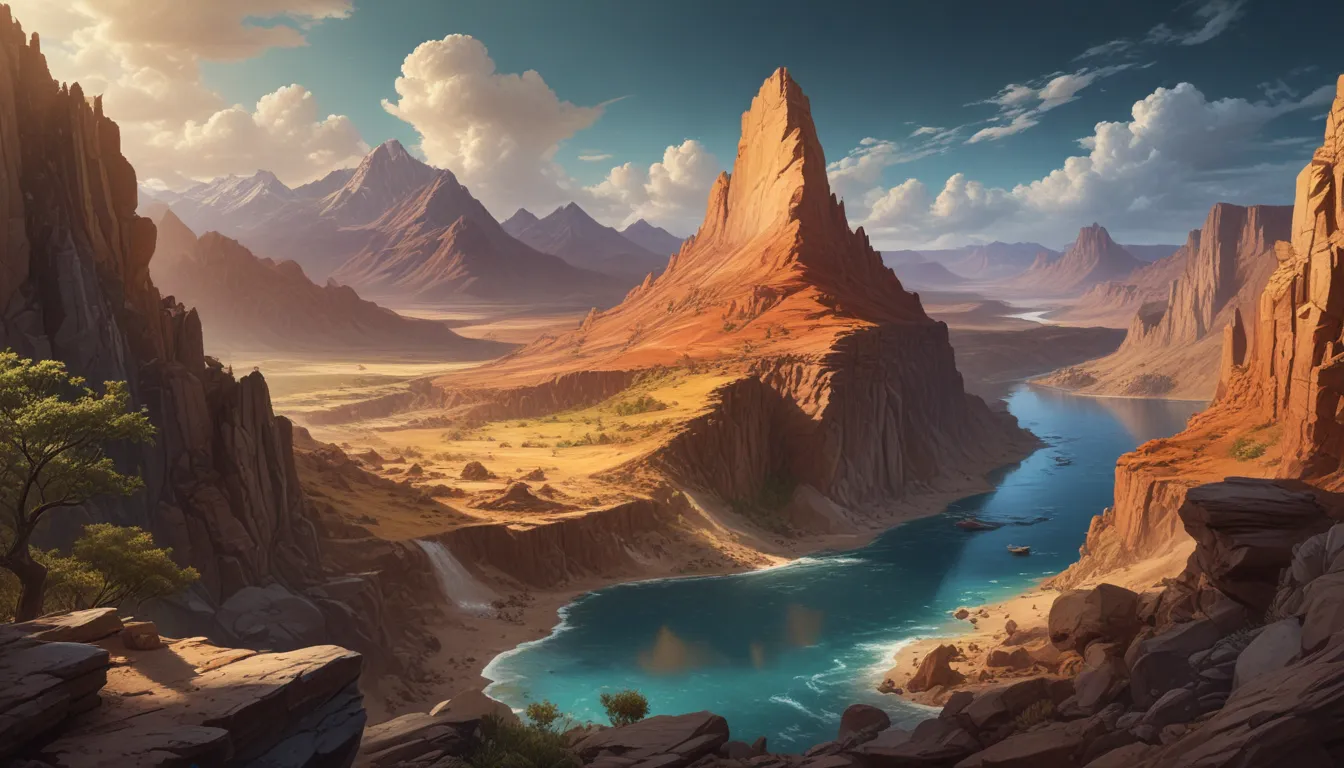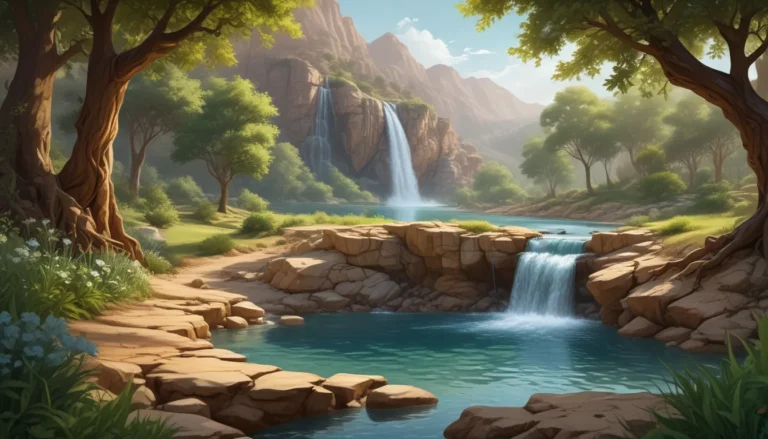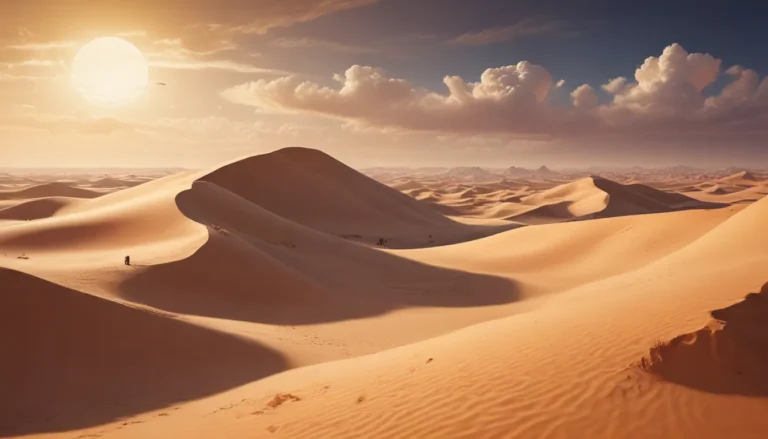A Note About Images: The images used in our articles are for illustration purposes only and may not exactly match the content. They are meant to engage readers, but the text should be relied upon for accurate information.
Welcome to a world of awe-inspiring landscapes and geological wonders, where uplifted plateaus stand as testaments to the Earth’s dynamic forces. From the majestic Himalayas to the iconic Colorado Plateau, these flat, elevated landforms offer a glimpse into the intricate processes that have shaped our planet for millions of years. Join us on a virtual expedition as we uncover 17 astounding facts about uplifted plateaus, revealing their sheer beauty and geological significance.
Exploring Uplifted Plateaus: Key Takeaways
- Uplifted plateaus, such as the Himalayas and the Colorado Plateau, are awe-inspiring geological formations shaped by tectonic forces and erosion. They influence climate, preserve history, and offer outdoor adventures.
- These plateaus have cultural significance, impact climate, and provide valuable insights into Earth’s geological history. They are dynamic landscapes that inspire myths, support ecosystems, and offer natural beauty.
Unveiling the Formation of Uplifted Plateaus
At the core of their existence, uplifted plateaus are geological formations that have undergone significant uplift due to tectonic activity. The immense forces pushing tectonic plates upwards create vast elevated landforms that mesmerize us with their grandeur.
Discovering the Majestic Himalayas
Among the renowned examples of uplifted plateaus stands the majestic Himalayan mountain range, often revered as the “Roof of the World.” The towering peaks of the Himalayas are the result of the collision between the Indian and Eurasian tectonic plates, showcasing the sheer power of geological processes.
The Astounding Colorado Plateau: A Natural Wonder
Spanning over 130,000 square kilometers, the Colorado Plateau in the western United States is one of the largest uplifted plateaus globally. Its breathtaking landscapes draw millions of visitors each year, offering a glimpse into the geological splendor of this natural wonder.
Embracing the Rich Biodiversity of Uplifted Plateaus
Uplifted plateaus serve as havens for unique and diverse ecosystems, thriving in their isolated and high-altitude environments. These plateaus foster the evolution of distinct flora and fauna, making them biodiversity hotspots waiting to be explored.
Unraveling the Cultural Significance of Uplifted Plateaus
Throughout history, uplifted plateaus have influenced the cultures of communities living around them. These landscapes have inspired myths, legends, and spiritual beliefs, becoming sacred sites that hold cultural significance for indigenous populations.
Marveling at the Formation of Iconic Waterfalls
Uplifted plateaus often give rise to magnificent waterfalls as rivers flow over their elevated edges. The forces of erosion carve out breathtaking cascades, sculpting the rocks and creating natural wonders that attract visitors from around the world.
Journeying to the Plateau of Tibet
The Plateau of Tibet, known as the “Roof of the World,” boasts an average elevation of over 4,500 meters, securing its position as the highest plateau on Earth. Nestled in Central Asia, this plateau captivates with its vast expanses and unique landscapes.
Understanding the Impact on Climate
Uplifted plateaus wield significant influence over local and regional climates, altering atmospheric circulation patterns and affecting temperature, precipitation, and wind patterns in surrounding areas. Their high elevation plays a critical role in shaping climatic conditions.
Embracing Famous National Parks on Uplifted Plateaus
Many renowned national parks are located on uplifted plateaus, offering visitors stunning views and opportunities for outdoor adventures. From Yosemite National Park in the United States to Zhangjiajie National Forest Park in China, these parks showcase the natural beauty of uplifted plateaus.
Uplifted Plateaus as Geological Time Capsules
Preserving a rich geological history, uplifted plateaus unlock insights into past climates, ancient life forms, and the Earth’s evolution over millions of years. The layers of rock exposed within these plateaus serve as windows to our planet’s ancient past.
Exploring Plateaus on Other Planets
Beyond our planet, uplifted plateaus akin to those on Earth can be found on celestial bodies such as Mars and Venus. These extraterrestrial plateaus offer researchers a glimpse into the geological processes that have shaped neighboring planets, expanding our understanding of the universe.
Witnessing Impressive Erosional Features
Erosion plays a pivotal role in shaping uplifted plateaus, with wind, water, and ice sculpting captivating landforms such as canyons, cliffs, and mesas. These erosional features add to the allure of these geological wonders, showcasing the power of nature’s forces.
Envisioning the Formation of Deep Valleys
Uplifted plateaus often give rise to deep valleys, creating breathtaking landscapes that enchant with their beauty. The interplay between tectonic forces and erosion carves out these valleys, providing vistas that invite exploration and admiration.
Celebrating Human Settlements on Uplifted Plateaus
Human civilizations have thrived on uplifted plateaus throughout history, drawn to the flat and elevated terrain for strategic advantages in agriculture, defense, and trade. These plateaus have witnessed the rise of vibrant settlements that have left their mark on the land.
Embracing Uplifted Plateaus as Outdoor Recreation Destinations
Transforming into popular outdoor recreation destinations, uplifted plateaus beckon adventurers and nature enthusiasts to explore their landscapes. Activities such as hiking, rock climbing, and wildlife spotting offer memorable experiences amidst the stunning natural beauty of these plateaus.
Unveiling the Geological Forces at Work
Complex geological processes, including the movement of tectonic plates, volcanic activity, and erosion, converge to shape uplifted plateaus into the awe-inspiring landforms that mesmerize us. These geological forces transform the landscapes over time, showcasing the ever-evolving nature of the Earth.
Witnessing the Constant Evolution of Uplifted Plateaus
Dynamic and ever-changing, uplifted plateaus continue to be shaped by ongoing geological processes that transform the landforms. These formations remind us of the enduring power of our planet and the forces that sculpt its surface, showcasing the beauty of geological evolution.
The Fascinating Conclusion
Uplifted plateaus stand as remarkable geological features that inspire awe and curiosity, revealing the profound beauty and mysteries of the Earth. Their majestic landscapes, incredible canyons, diverse ecosystems, and ancient history offer a glimpse into the geological wonders that shape our planet.
Amidst the complexities of tectonic activity and erosion, uplifted plateaus unveil a world of natural wonders waiting to be explored. From the unique flora and fauna that call these plateaus home to the geological time capsules that preserve Earth’s ancient history, these landforms captivate us with their sheer magnificence.
As we navigate the realms of uplifted plateaus, we discover the intricate layers of geological processes that have sculpted these landscapes over time. Each fact, each feature, speaks to the enduring power of nature and the beauty that surrounds us, inviting us to delve deeper into the wonders of uplifted plateaus.
FAQs: Unveiling Answers to Your Questions
-
What causes plateaus to uplift?
Plateaus uplift due to tectonic forces, including the collision of tectonic plates and the upwelling of magma beneath the Earth’s crust. -
How long does it take for a plateau to form?
The formation of a plateau can span millions of years, involving geological processes like erosion and uplift that shape the landforms over time. -
Do uplifted plateaus have ecological significance?
Yes, uplifted plateaus harbor diverse ecosystems due to their varied topography and climatic conditions, supporting unique plant and animal species. -
Can uplifted plateaus reveal Earth’s ancient history?
Absolutely! The layers of sedimentary rocks found in uplifted plateaus contain vital information about past geological events, climate shifts, and prehistoric life. -
Are there famous uplifted plateaus?
Indeed, several renowned uplifted plateaus exist, including the Colorado Plateau in the United States, the Ethiopian Highlands in Africa, and the Nullarbor Plain in Australia. -
What activities can you engage in on an uplifted plateau?
Uplifted plateaus offer a wide range of recreational activities, from hiking and rock climbing to camping and wildlife watching, providing ideal settings for scientific exploration and adventure. -
Are uplifted plateaus associated with natural hazards?
Some uplifted plateaus may be prone to earthquakes and volcanic activity, emphasizing the importance of taking necessary precautions while visiting or residing in these regions. -
Can uplifted plateaus be found in coastal areas?
Coastal uplifted plateaus are commonly found, shaped by wave erosion and uplifted by tectonic processes, offering scenic views of the ocean and unique geological features.
Embark on a journey of wonder and discovery as you delve into the captivating world of uplifted plateaus, where beauty, biodiversity, and geological marvels converge to create landscapes that inspire and amaze. Explore, learn, and marvel at the wonders of uplifted plateaus, where nature’s forces have shaped the Earth’s surface into breathtaking vistas waiting to be explored.






